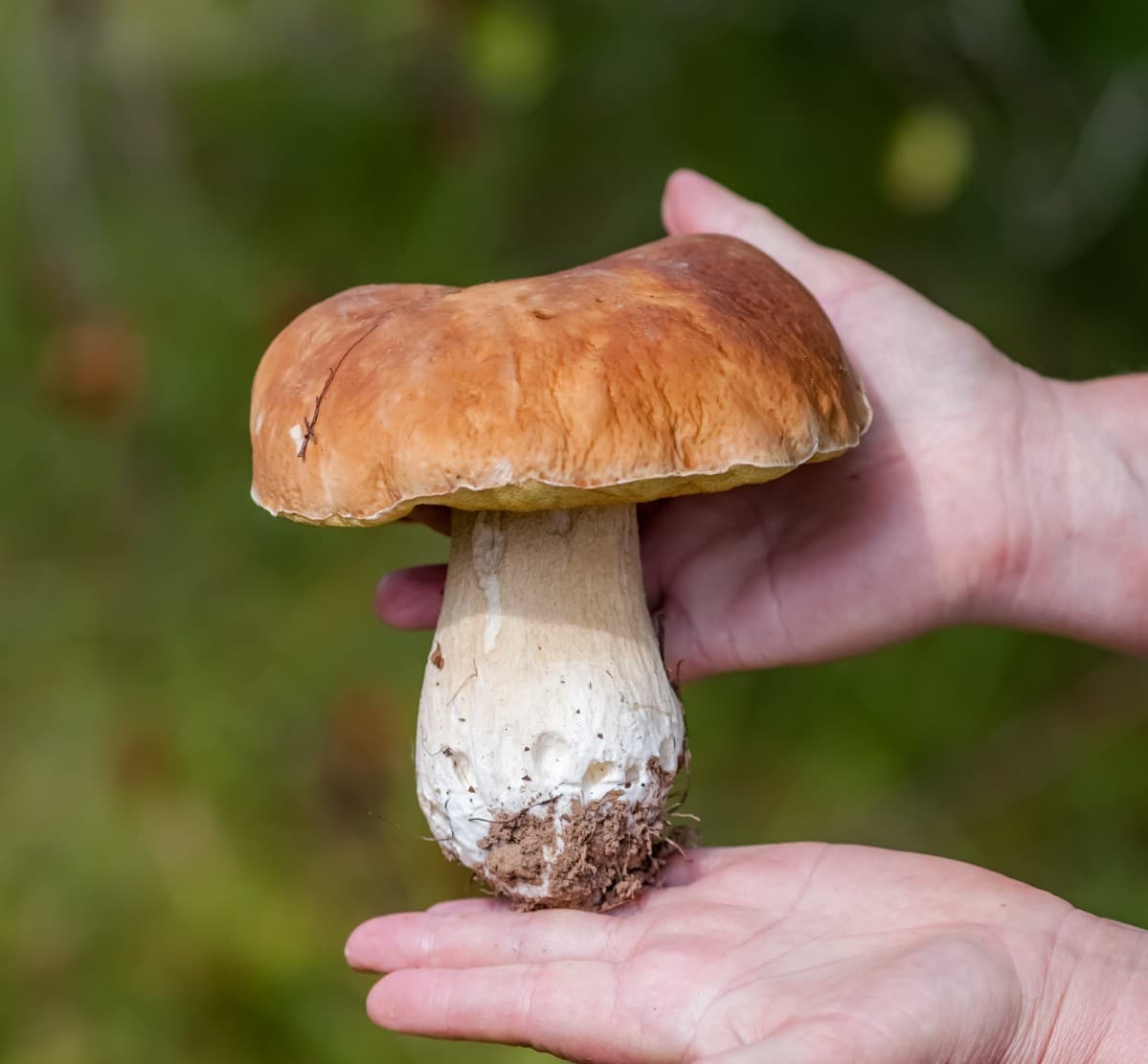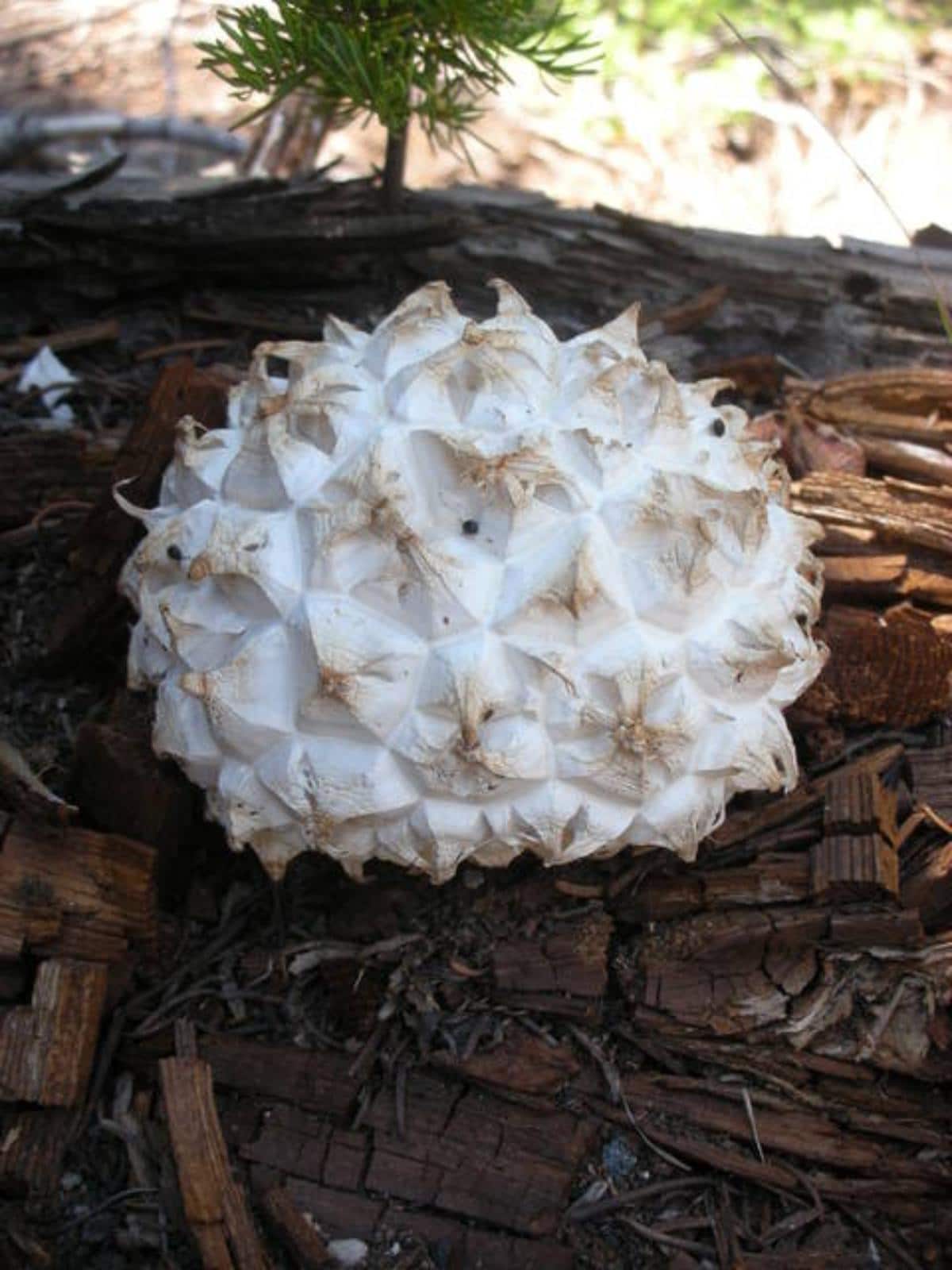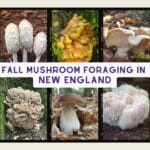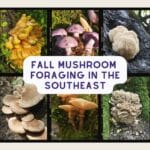The Pacific Northwest summer is hot and dry with a few rain storms tossed in, but not nearly enough for the fungi to thrive. July is usually the peak of the “dry season.” There are still mushrooms out there, though, and while summer mushroom foraging in the Pacific Northwest might be slimmer pickings, there are still gems out there. Chicken of the woods, chanterelles, and lobster mushrooms are just a few edible mushroom species you might encounter.
One of the great things about the Pacific Northwest is the vast diversity in bioregions. Between high-elevation mountainous ranges and coastal beaches, there are a lot of places to look. Of course, when you’re out in the woods, bring your bug spray – insect and tick spray is a necessity. We love these permethrin-treated socks (and other clothing)—they really work to keep the ticks away. Also, we don’t go in the woods without these mosquito head nets to protect our faces from the relentless mosquitos and black flies. They may look a little funny, but they’re totally worth it.
Remember the bear spray, too!

If I’m missing any pacific northwest spring mushrooms, please let me know in the comments! Also, check out the guides for Fall Mushroom Foraging in the Pacific Northwest, Winter Mushroom Foraging in the Pacific Northwest, and Spring Mushroom Foraging in the Pacific Northwest.
Jump to:
Summer Mushroom Foraging In The Pacific Northwest
Chicken of the Woods
The bright orange chicken of the woods is highly sought after by everyone who loves wild edible mushrooms. Chicken of the woods is dense and meaty, with a mild flavor that is fabulous in every dish it is used. This is a great species for the beginner forager because there are no lookalikes. Chicken of the woods is primarily a late summer to fall species, but you might see it starting in August. It is more likely to fruit in September and October, though.
There are two primary chicken of the woods species in the pacific northwest. One grows on hardwoods, and the other grows on conifers. They look quite similar but are pretty easy to differentiate based on tree species. Both have the bright cap coloring that is quintessential to chicken of the woods mushrooms.
Laetiporus gilbertsonii – This is the western version of the type species of chicken of the woods (Laetiporus sulphurus). It has a distinctive bright yellow or orangish-yellow cap and yellow pores. This is the one that grows on hardwoods; it seems to prefer oaks and eucalyptus trees. This species also tends to only occur along the coast. There aren’t many reports of it from inland.
Laetiporus conifericola – This chicken of the woods grows on conifer trees, and it’s how you can easily differentiate it from L. gilbertsonii. The cap is peachy orange to bright orange and has yellow pores. This species fruits on fir, hemlock, and spruce. If you forage from a conifer tree, be advised that it may cause stomach upset. The mushroom isn’t toxic or dangerous; just more people tend to be sensitive to it. And, many have proffered that specimens growing on conifers are more likely to cause distress. This may be from a lack of sufficient cooking, too.
If you’re new to eating chicken of the woods, cook it very well and only try a little bit the first time. Wait 24 hours then if no reaction, enjoy the rest. It’s worth it!

Chanterelles
The chanterelle season doesn’t really start until the weather cools down in fall, but there is a decent likelihood of finding early chanterelles. One species, in particular, Cantharellus roseocanus, tends to appear earlier than others. This chanterelle is known as the rainbow chanterelle or rosy chanterelle because it isn’t bright golden yellow like the type species.
The great thing about chanterelles is that they show up in the same location year after year, so if you find some, mark that spot. Chanterelles do have a few troublesome lookalikes, so be sure you know how to identify them correctly. These mushrooms are top in the edible mushroom world, with a slightly sweet, fruity flavor that is divine grilled, sauteed with butter, or added to stir-fries.
Pacific golden chanterelle (Cantharellus formosus) – Oregon’s state mushroom, the pacific golden chanterelle, is a beautiful species. The cap is orangish-yellow, and the false gills are orange to yellow, sometimes with a pinkish hue. They fruit with conifers, preferring Douglas fir and western hemlock.
Cascade chanterelle (Cantarellus cascadensis) – This chanterelle species starts appearing in late summer and fruits through winter. It fruits on the ground around conifers, with a preference with Douglas fir. The caps are the traditional golden yellow to orange but the false gills are pale yellow to cream color, which sets it apart from other chanterelle species. It is a chonky chanterelle!
Rainbow chanterelle (Cantharellus roseocanus) – These chanterelles are dull tan to pinkish to whitish on top, but underneath the cap, they show off their true chanterelle trait with bright orange false gills. Look for these chanterelle around spruce trees in cool regions, like sub-alpine lakes and around the coastline. They fruit with spruces and pines, with a preference for Bishop pine, lodgepole pine, jack pine, and Sitka spruce.
White chanterelle (Cantharellus subalbidus) – This is the chanterelle that defies the norm – instead of the bright golden yellow color, it is entirely white, cap and gills. It’s like the ghost of the golden chanterelle! The white chanterelle is primarily a fall species, but you might encounter it in the late summer as well.

King Boletes
The king bolete, aka porcini or cep or piggies, is a treasured edible mushroom species around the world. In the Pacific Northwest, they fruit on the ground in association with spruce trees and other conifers. They like cool, shady areas and are often found in higher elevations around streams or riverbeds.
King boletes are one of many species in the bolete family, a family with up to 300 species in North America alone. The king isn’t difficult to identify, but you want to understand the lookalikes and how to do a proper identification.
Unfortunately, the slugs really love king boletes, too, and it’s not uncommon to find bug and slug-infested specimens way past foraging. But, even if they’re not great foraging this year, mark the spot and check again next year, just a little earlier! Boletes fruit in the same location for many years.
King boletes have a sweet, nutty flavor and dense, meaty texture – they’re one of the best edible mushroom species. Saute them with garlic and butter for a simple treat, or add them to stir-fries, pasta dishes, stews, omelets, or risotto. They’re great in everything!

Lobsters
The brilliant lobster-shell orange of the lobster mushroom makes it hard to miss, although it does try to hide. Pay attention to the lumps and humps underneath the needle duff on the forest floor. You never know; a lobster might be tucked underneath, hiding away. These mushrooms are great for beginner foragers because they have no lookalikes.
Lobster mushrooms fruit in the Pacific Northwest from July to about October, and they are most commonly found around fir and spruce trees in low-elevation regions (especially in the early part of the season). This mushroom is actually a parasite that attacks and transforms common Russula mushroom species. So, if you really want to find it, scope out where the Russulas are fruiting and keep an eye on them.
Lobster fungi are delicous with a slightly sweet taste and firm texture. They’re excellent on pizza, added to soups and stews, or served over pasta. Contrary to common rumor, these do not actually taste like seafood. At least not on their own. You could add some old bay and butter and between that and the color, it could trick you pretty good.

Saffron Milky Cap
Milky caps are prolific around the country and many are edible, but few are as delicous as this one. It’s even reflected in its scientific name, Lactarius deliciosus. Saffron milky caps are dense and juicy, with a texture much like the common button mushrooms and a more robust flavor. They are excellent used in any recipe you use button or portobello mushrooms, from roasting to grilling to adding to pastas, stews, and stir-fries.
The most common species in western North America is Lactarius deliciosus var. areolatus, and it fruits from mid-summer through fall. It is easy to see on the forest floor because the cap is bright orange to red, at least when young. With age, it dulls and turns a dirty orange or yellow. When the gills are cut, it bleeds an orange liquid latex milk. All parts of the mushroom stain green when handled, and at full maturity, it might actually be totally stained green. It grows with conifers, specifically Englemann spruce and lodgepole pines.
Another species of saffron milky cap also grows in the pacific northwest, Lactarius rubrilacteus. It also grows with conifers, with a preference for Douglas fir. This milky cap looks extremely similar to the other one with one primary difference – when cut, the gills bleed a purplish red milky latex instead of orange. So, when you find these species, make sure you are paying attention to the milky color.
Both these saffron milky caps are good edibles, so it doesn’t matter too much if you mix them up, but it’s good to be completely certain of your species before eating.

Giant Puffballs
Some species of puffballs will start showing up in mid to late-summer. The Pacific Northwest has some fun puffball species, too. Puffballs are easy to identify because they look like giant all-white sports ball, like someone left a volleyball in the middle of a field.
Puffball mushrooms don’t have a lot of flavor; many people liken them to tofu. But, this means they soak up other flavors really well. They’re great deep fried, grilled, and baked. Remember that puffballs must be entirely white inside to be good for the dinner table.
- Giant Western Puffball (Calvatia boonia) –The biggest of big puffballs on the west coast, this one gets to be volleyball size or larger! It is all white and has rough scales.
- Sculpted Puffball #1 (Calbovista subsculpta) — This soft-ball sized puffball grows around conifers and likes disturbed areas like meadows and along roadsides. It is round and covered with blunt triangular scales.
- Sculpted Puffball #2 (Calvatia sculpta) –This puffball and the one described above share a common name and look a lot alike. The primary difference is slight and is in how the scales on the cap form. With this species of sculpted puffball, the triangular scales are pointed upwards and look like meringue on top of a pie. The first sculpted puffball’s scales are blunt.

Other Summer Mushrooms In The Pacific Northwest
You’ll probably stumble across lots of Russula and milky cap mushrooms. These two types look pretty similar, and some are edible, but not all of them. These mushrooms, even though they are edible, are not included in this list because most of them aren’t that fantastic. Some are decent, but not compared to the prime edible species listed above.
Many boletes are also starting to appear in the forest, in addition to the King Bolete, which is already listed. Make sure you read up on the boletes before foraging them. They can be tricky, though thankfully, not super dangerous; they just taste really bad if you get the wrong ones.










Leave a Reply